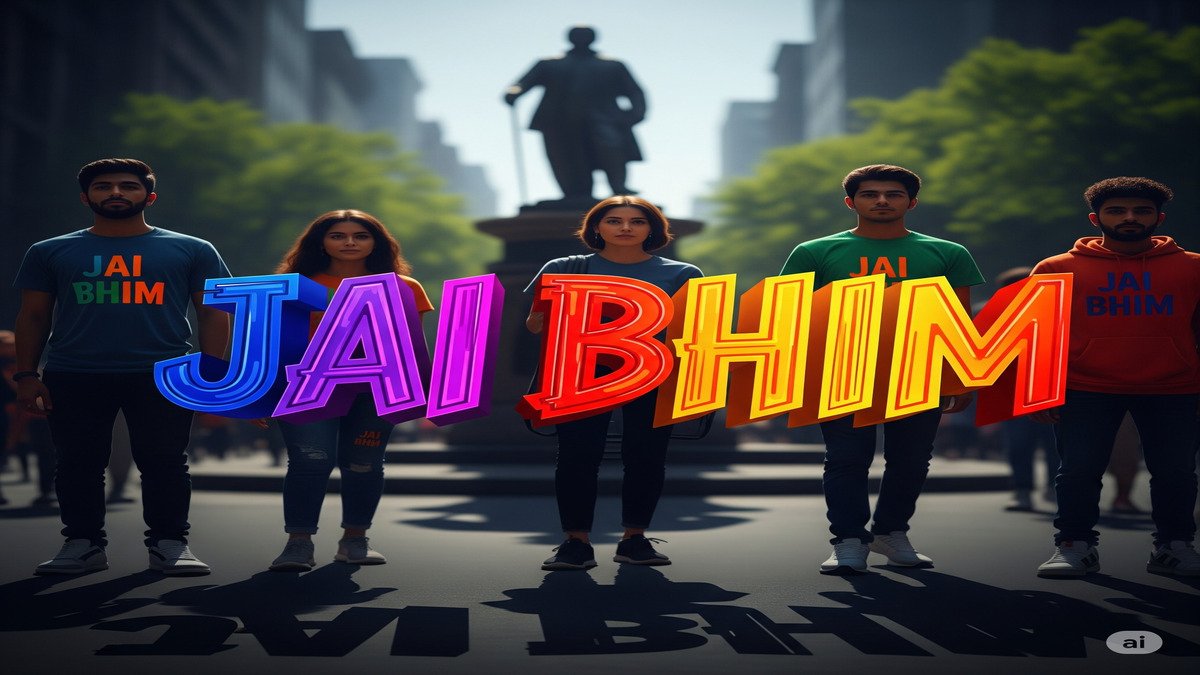News
Jai Bhim Colour: More Than a Shade, A Statement

“Jai Bhim” is more than just a greeting — it’s a powerful expression of identity, equality, and pride among followers of Dr. B.R. Ambedkar. But what happens when this phrase is paired with the word “colour”? Jai Bhim Colour is an emerging term that represents not just skin tone, but the deep-rooted celebration of Dalit identity, self-respect, and resistance against caste-based discrimination.
In many societies, colour has long been used to divide and marginalize. Jai Bhim Colour flips that narrative. It embraces skin tone as a source of pride and political expression. It challenges oppressive beauty standards and asserts that identity and dignity cannot be separated from appearance.
It’s about reclaiming space — visually, socially, and culturally. Through fashion, art, literature, and media, Jai Bhim Colour represents visibility and voice for communities that have often been silenced. It’s not just a trend — it’s a powerful movement.
The Political and Cultural Meaning of Jai Bhim Colour
Jai Bhim Colour isn’t a literal paint shade — it’s a symbolic banner. It reflects the struggles, dreams, and determination of marginalized communities, particularly Dalits, to be seen and respected in a society that has long erased them. It aligns with the larger Ambedkarite movement which fights for equality, justice, and representation.
Historically, skin tone has been used to maintain hierarchies. Fairness was celebrated; darkness was shamed. Jai Bhim Colour proudly rejects that. It’s about embracing natural skin with dignity, challenging casteist and colourist mindsets. Wearing “Jai Bhim Colour” — whether in the form of blue clothing, dark-toned makeup, or artistic expression — is a form of social and political resistance.
Blue, the colour associated with Ambedkar, features prominently in this cultural identity. It’s more than a preference — it’s a declaration. From social media campaigns to street fashion, people are using colour to reclaim narratives and tell their stories on their terms.
Blue: The Colour of Resistance
Blue represents Ambedkar’s vision — calm, powerful, and firm. It’s the colour of the oppressed turning the tide. In Jai Bhim Colour, blue becomes a symbol of unity, hope, and social change. It’s worn with pride.
Reclaiming Dark Skin
In a world that often idealizes fairness, Jai Bhim Colour celebrates brown and dark skin. It tells young people: “You are beautiful, powerful, and worthy — just as you are.” It’s a revolution of self-love.
Jai Bhim Colour in Art, Fashion, and Expression
Creative spaces are a key battleground for representation, and Jai Bhim Colour is making its presence felt. Artists and designers are creating works that reflect Dalit pride and challenge dominant narratives. From bold posters to runway statements, blue and brown tones take center stage.
Fashion is becoming a form of activism. T-shirts bearing Jai Bhim slogans, blue saris, and street-style clothing rooted in caste pride are gaining visibility. These aren’t just aesthetic choices — they are expressions of identity, built on generations of resilience.
Music and poetry also play vital roles. Spoken-word artists and singers use their voices to address discrimination, casteism, and the beauty of their roots. Through rhythm, rhyme, and visuals, they paint the world in Jai Bhim Colour — raw, real, and unapologetic.
Digital platforms amplify this creativity. Instagram pages, YouTube channels, and blogs are filled with content that reflects the strength and pride of this identity.
Fashion as Protest
Clothing with Jai Bhim colours or slogans is not just style — it’s statement. It says, “We are here. We are proud.” Wearing Ambedkar blue, embracing natural skin, and showcasing symbols of Dalit pride turns everyday wear into visible resistance.
Art That Speaks Truth
Dalit artists are redefining modern art with powerful visuals. Their work is grounded in history, pain, and pride — painting a brighter future where stories from the margins take center stage.
Building Confidence and Community
At its heart, Jai Bhim Colour is about self-worth and solidarity. For generations, people have been taught to hide their identities. Jai Bhim Colour says: reveal it. Celebrate it. It’s not just about personal confidence, but about building community and collective pride.
When a young girl wears her natural skin with pride, or a boy chooses Ambedkar blue for his graduation photo, that’s empowerment. When communities gather wearing symbolic colours, sharing poems or food, that’s healing. This movement teaches that pride isn’t arrogance — it’s survival. It’s essential for dignity and mental health.
Jai Bhim Colour invites everyone to see beauty beyond the dominant lens. It says: don’t erase your history. Paint it boldly. Share it proudly.
Community Celebrations
From Ambedkar Jayanti to local art fairs, Jai Bhim Colour is being woven into cultural events. It brings people together not just through history, but through music, food, art, and shared joy.
A Boost in Self-Esteem
Young people embracing their skin, history, and heritage feel more confident. When you’re told you’re beautiful and powerful as you are, you begin to believe it. That belief changes everything.
Conclusion: Wearing Our History, Living Our Pride
Jai Bhim Colour is not just a statement of fashion or art — it’s a statement of existence. It boldly declares that every shade of brown, every voice from the margins, deserves space, recognition, and celebration. It’s about rejecting shame, reclaiming beauty, and resisting oppression.
As more people join this movement, the world begins to change — not because the powerful gave space, but because the ignored made space for themselves. Whether through a blue scarf, a painted mural, or simply standing tall in your own skin, Jai Bhim Colour is a call to be seen.
In every hue, in every voice, in every step forward — we rise. Jai Bhim.
-

 News1 week ago
News1 week agoMastering Blox Fruits with a Script: A Player’s Guide
-

 Sports2 weeks ago
Sports2 weeks agoThe Many Faces of Ethan Sterling: From Self-Growth to the Basketball Court
-

 Technology1 week ago
Technology1 week agoThe Technology Behind Cursed-Memes.com
-

 Sports2 weeks ago
Sports2 weeks agoCricfy IND vs AUS: Your Easy Guide to Following the Biggest Cricket Battle













